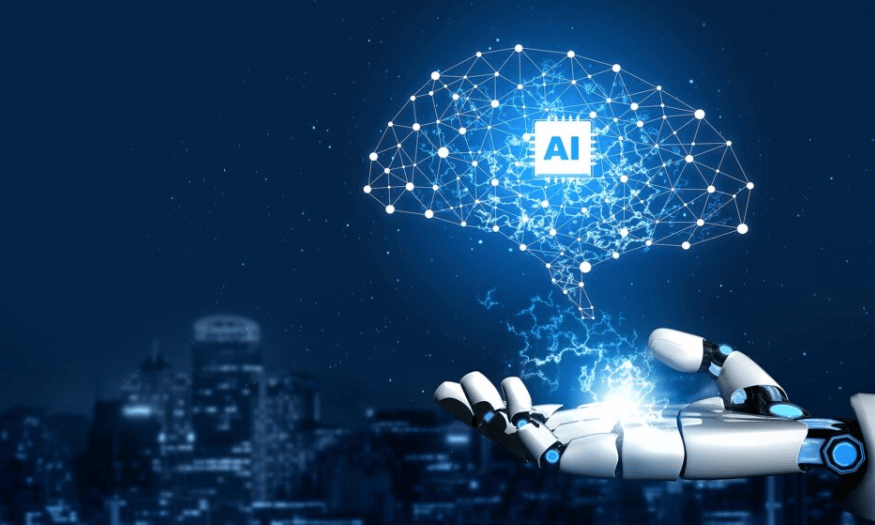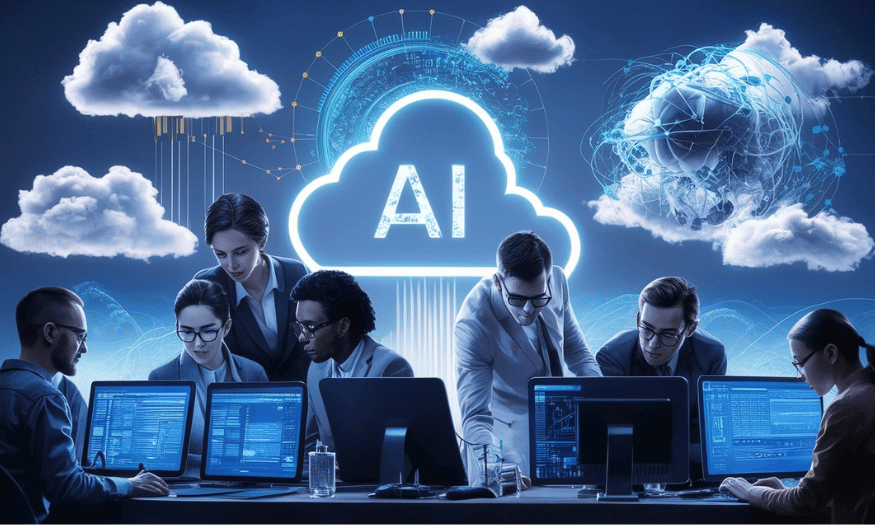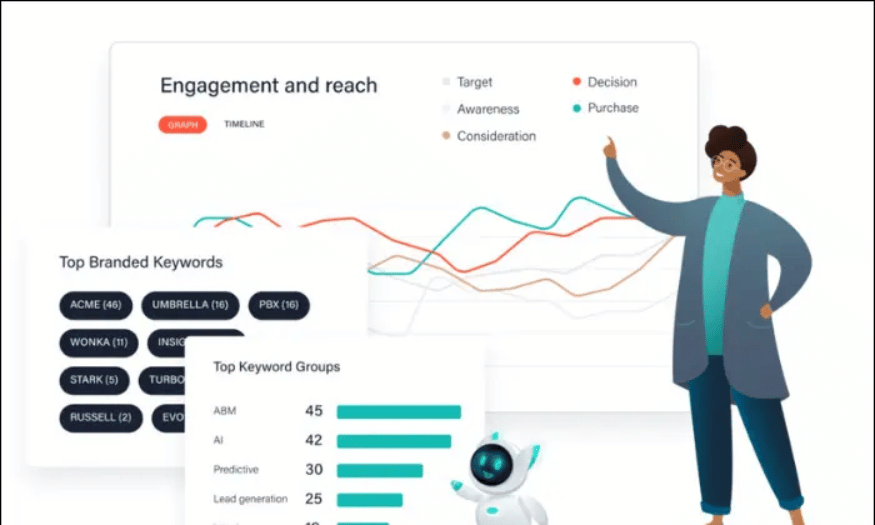Best Selling Products
Technology Trends You Need to Know in the Digital Transformation Era
Nội dung
- 1. Internet of Things (IoT) technology trends
- 2. Artificial Intelligence (AI) technology trends
- 3. Blockchain Technology Trends
- 4. Cloud Computing Technology Trends
- 5. Big Data Technology Trends
- 6. 5G technology trend – New generation mobile network connection
- 7. Machine Learning Technology Trends
- 8. RPA (Robotic Process Automation) – Process automation with robots
- 9. Edge Computing Technology Trends
- 10. Conclusion
In the context of digital transformation taking place strongly around the world, organizations and businesses need to grasp and apply the latest technology trends to maintain competitiveness. From artificial intelligence (AI) to the Internet of Things (IoT), these technologies not only help optimize operational processes but also create new values for customers. In this article, let's explore with Sadesign the prominent technology trends, from process automation to data security, to help businesses overcome challenges and take advantage of opportunities in the digital age.

In the context of digital transformation taking place strongly around the world, organizations and businesses need to grasp and apply the latest technology trends to maintain competitiveness. From artificial intelligence (AI) to the Internet of Things (IoT), these technologies not only help optimize operational processes but also create new values for customers. In this article, let's explore with Sadesign the prominent technology trends, from process automation to data security, to help businesses overcome challenges and take advantage of opportunities in the digital age.
1. Internet of Things (IoT) technology trends
The Internet of Things (IoT) is becoming an indispensable concept in the 4.0 industrial revolution. It represents a network of physical devices equipped with sensors, software and Internet connectivity, allowing them to collect and exchange data without human intervention. From home appliances such as smart refrigerators to factory machines, IoT has been improving work efficiency in many fields. Businesses can monitor and optimize production processes in real time, thereby increasing productivity and reducing waste.
One of the prominent areas of IoT application is supply chain management. Businesses can track the delivery of goods from raw materials to finished products, increasing transparency and reducing risks. IoT sensors provide detailed information about the condition of goods, from temperature to humidity, ensuring product quality throughout the transportation process. In addition, IoT also plays an important role in predicting failures and proactively maintaining equipment, minimizing downtime and maintenance costs.
In Vietnam, many businesses such as Vinamilk and Viettel Post have applied IoT in farm and warehouse management, bringing about clear results. This trend not only helps businesses optimize processes but also enhances customer experience. With the ability to connect and interact with devices, IoT promises to continue to explode in the future, creating a competitive advantage for those who embrace this technology early.
2. Artificial Intelligence (AI) technology trends
Artificial Intelligence (AI) is changing the way businesses operate and interact with customers. This technology allows machines to simulate human thinking, learn from data and make smart decisions. In the business environment, AI is applied through systems such as chatbots, product recommendations and customer data analysis. Thanks to AI, businesses can improve service capabilities, improve workflows and reduce costs.
One of the prominent applications of AI is in the field of marketing. AI helps personalize content and optimize advertising based on consumer behavior. AI algorithms are capable of analyzing big data to predict demand and manage inventory more intelligently, thereby minimizing overstocking or product shortages. In the financial field, AI also plays an important role in credit assessment and detecting unusual transactions, protecting businesses from financial risks.
A typical example of AI application is ChatGPT, a powerful language model from OpenAI. ChatGPT is capable of communicating in natural language, providing information and supporting users in many different fields. Businesses can integrate ChatGPT into customer care systems to automate frequently asked questions, handle customer requests quickly and effectively. AI technology not only improves work efficiency but also creates a better user experience, promising to become an indispensable part of digital transformation.
.png)
3. Blockchain Technology Trends
Blockchain is one of the most groundbreaking technologies in recent times, featuring the ability to store data in the form of a block chain. Each piece of information is recorded in a "block" and linked together by an encryption algorithm, creating high transparency and security. Blockchain is not only limited to cryptocurrencies but also extends to many areas, from supply chains to banking, helping to improve processes and reduce fraud.
In the supply chain sector, blockchain provides the ability to track the provenance and control the quality of goods effectively. Businesses can verify the origin of products and ensure that goods are transported in the best condition. This not only enhances brand reputation but also creates trust among customers. Furthermore, blockchain also helps to process transactions faster and more transparently in the banking and finance industry, facilitating secure cross-border transactions.
With its strong authentication and transparency, blockchain is attracting the attention of many businesses. This technology not only helps reduce transaction costs but also increases management efficiency. Obviously, blockchain will be one of the important technology trends in the future, opening up many new opportunities for businesses in the digital transformation era.
4. Cloud Computing Technology Trends
Cloud Computing, also known as cloud computing, is a model of providing technology resources over the Internet, allowing businesses to access services such as servers, databases and software without having to invest in large physical infrastructure. Instead of spending money on purchasing and maintaining equipment, businesses can rent flexible services according to their needs. This not only helps reduce costs but also provides flexibility in expanding or shrinking the scale of operations.
There are three main types of cloud computing services: SaaS (Software as a Service), IaaS (Infrastructure as a Service), and PaaS (Platform as a Service). SaaS allows users to access software over the web without installation, and is popular in applications such as accounting software or customer relationship management (CRM). IaaS provides the server and storage infrastructure, making it easy for businesses to manage resources without having to worry about hardware. PaaS, on the other hand, provides a platform for developers to develop applications without having to build the infrastructure from scratch.
Cloud computing not only helps speed up software deployment but also ensures that users can access data anytime, anywhere. Especially in the context of increasingly popular remote working, cloud computing has become the optimal solution for many Vietnamese businesses in the digitalization journey. The development of this technology promises to continue to promote innovation and improve business processes, helping businesses compete more effectively in the market.
.png)
5. Big Data Technology Trends
Big Data refers to the huge amount of data that businesses have to deal with today. This data is not only diverse in format but also generated very quickly, from user behavior on websites and social networks to business transactions and sensor data from machines. To exploit the value of Big Data, businesses need specialized technologies to store, analyze and process this amount of data effectively.
In the business context, Big Data is being applied to analyze customer behavior, thereby personalizing products and services to better meet market needs. Forecasting consumer trends based on Big Data also helps businesses plan production and marketing effectively. In addition, Big Data also supports optimizing operational processes, from inventory management to cash flow, creating more timely and accurate decisions.
Big Data is not just a trend but also the foundation for many modern technologies such as AI, Machine Learning and IoT. Effective exploitation of big data will bring significant competitive advantages to businesses in the coming years. With the ability to analyze and understand customers in depth, businesses can create better experiences, thereby building stronger relationships with customers.
6. 5G technology trend – New generation mobile network connection
5G, the fifth generation of mobile networks, is expected to revolutionize the way we connect and communicate. With faster data speeds, lower latency, and the ability to connect more devices simultaneously than previous generations, 5G creates a critical infrastructure foundation for many new technology trends. This will not only accelerate the development of IoT, but also open up opportunities for applications in autonomous vehicles, augmented reality (AR/VR), and smart manufacturing.
For businesses, 5G opens up enormous potential. High data speeds improve remote working and real-time information-demanding applications. 5G’s stable connectivity also enables continuous monitoring and operation of IoT devices, thereby improving the efficiency and reliability of manufacturing processes. Furthermore, 5G helps create seamless digital experiences in e-commerce and customer service, improving consumer satisfaction.
In Vietnam, network operators have begun commercial testing of 5G in many major cities, demonstrating their commitment to developing technology infrastructure. 5G is considered one of the important technology trends in 2025 that CEOs and business leaders need to closely monitor. When infrastructure conditions allow, integrating 5G into business operations will open up many new opportunities, helping businesses not only catch up but also lead in the digital transformation era.
.png)
7. Machine Learning Technology Trends
Machine Learning (ML) is an important branch of artificial intelligence (AI) that allows systems to automatically learn from data without being reprogrammed. Instead of having to build rules one by one, ML has the ability to detect patterns and regularities from past data to make predictions or decisions. This offers great potential for businesses to optimize processes and improve customer experiences.
In practice, ML is often used to predict customer behavior, such as market demand or the likelihood of service churn. By analyzing historical data and user behavior, businesses can better tailor their marketing strategies and product development. Additionally, ML can also detect anomalies in finance, operations, or cybersecurity, helping businesses enhance security and reduce risk.
Machine Learning’s integration with cloud platforms and Big Data is making this technology more and more popular. Tapping into the huge amount of data that businesses own will make ML a powerful tool in decision making and product development. With its rich applications, Machine Learning promises to change the way businesses operate in the near future.
8. RPA (Robotic Process Automation) – Process automation with robots
RPA, or Robotic Process Automation, is a technology that uses robotic software to perform repetitive and structured tasks that are typically performed by humans on computers. Unlike physical robots, RPA operates entirely in a digital environment, simulating human operations such as data entry, copying data, sending emails, and processing invoices. This not only saves time but also reduces errors in the work process.
Businesses are using RPA to automate processes in accounting, human resources, and inventory, helping to speed up work processing. Automation not only frees up resources but also allows employees to focus on more strategic tasks. RPA has proven to be effective in improving workflows, especially in businesses with high volumes of repetitive work.
One of the reasons why RPA is such an attractive technology trend is its low implementation costs and easy integration with existing systems. This makes RPA a suitable solution for both small and medium-sized businesses, helping them increase efficiency and improve productivity without having to invest too much in technology infrastructure.
.png)
9. Edge Computing Technology Trends
Edge Computing is a model of processing data where it is created, i.e. “close to the device” instead of sending all data to a data center or cloud. This model reduces latency, saves bandwidth, and increases response speed, which is especially important in situations that require real-time response. With the growth of the Internet of Things (IoT), Edge Computing is becoming an indispensable part of technology strategies.
The practical applications of Edge Computing are diverse. In manufacturing, on-site monitoring through sensors and devices requires real-time data processing to improve efficiency and reduce incidents. In the field of autonomous vehicles, image analysis and on-board decision making are essential to ensure safety. IoT devices in retail and logistics also leverage Edge Computing to optimize operational processes.
Edge Computing not only complements cloud computing but also makes data processing more flexible, especially in industries that require high speed and accuracy. As this technology continues to develop, it will create many new opportunities for businesses to optimize processes and improve user experience. The combination of Edge Computing and other technologies such as AI and Machine Learning will open up unprecedented possibilities for businesses in the digital age.
10. Conclusion
Digital transformation is not just about adopting new technology, but also a revolution in thinking and business strategy. Monitoring and applying key technology trends will help businesses increase efficiency, improve customer experience and develop sustainably. In the future, businesses that proactively grasp these trends will have a great advantage in shaping the market and building strong brands. Start your digital transformation journey today so you don't get left behind!












































